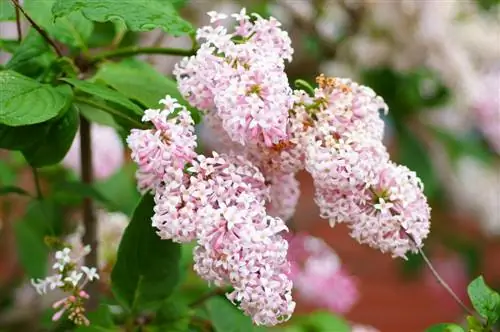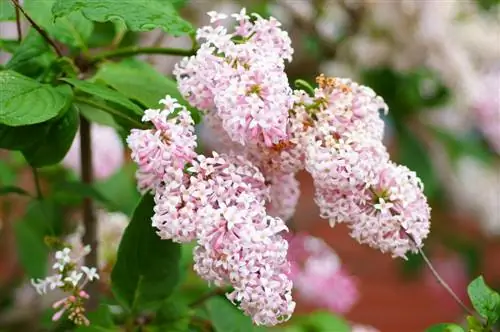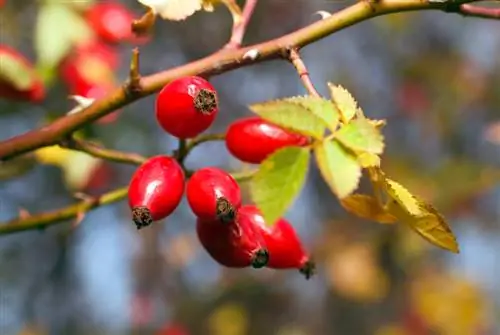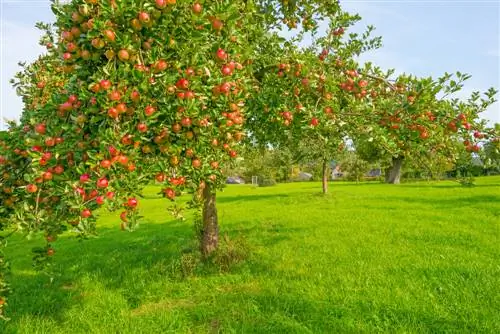- Author admin [email protected].
- Public 2023-12-16 16:46.
- Last modified 2025-01-23 11:21.
Like its big sisters, dwarf lilac grows like a bush and develops many root runners. However, the bushes, which grow to a maximum height of 150 centimeters, can also be easily cultivated from standard stems. You can choose between natural and refined varieties.

What is dwarf lilac on trunk and how do you care for it?
Dwarf lilac on a trunk is an ideal space-saving alternative to conventional lilac bushes and can be cultivated in pots or gardens. The common species are Syringa meyeri and Syringa microphylla 'Superba', both of which require regular pruning and care to maintain their attractive shape.
Which dwarf lilacs are there?
Two different types of dwarf lilacs are commercially available. Syringa meyeri is most similar to the real lilac, Syringa vulgaris, and also blooms at the same time. Popular varieties include 'Palibin' (light purple flowers), 'Red Pixie' (pink flowers) and 'Josee' (purple pink flowers). Syringa microphylla 'Superba', on the other hand, has its German name, 'Small-leaved Autumn Lilac', for a reason: This variety has the longest flowering period of all lilacs and often shows its splendor a second time from the summer months onwards.
Multiple uses
A standard tree is a shrub trained into a tree that, instead of having many shoots, only has one main shoot and a sprawling crown. Such a lilac tree has an unbeatable advantage over conventional bushes: it requires significantly less space and can therefore be easily cultivated in pots. You can also plant the hardy tree in the garden, for example
- as an eye-catcher in the front garden
- several trunks flanking the main path
- as a solitaire, for example in the middle of a lawn
- as the central focus in the perennial garden
Planting and caring for dwarf lilac standard stems properly
When planting and caring for the standard tree, proceed in the same way as with a normal lilac bush, the needs are the same. You only need to be more careful with specimens cultivated in pots; they must be regularly supplied with water and nutrients and also repotted into a larger container every two years. In addition, a standard tree needs significantly more pruning care (€14.00 on Amazon) so that it stays in shape and does not suddenly turn into a shrub again. Root suckers must be removed regularly, but you must dig them up and cut them directly at the base - otherwise there will be more and more of them. The crown must also be thinned out and trimmed annually.
Tip
If you don't want to buy a ready-made dwarf lilac trunk, you can, for example, train a cutting into a standard tree yourself. If you want to go faster, a dwarf lilac shoot can also be grafted onto a suitable rootstock - for example Syringa vulgaris.






